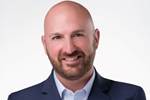End-to-End Quality Management For Aseptic PET Beverage Bottling
Sidel introduces Qual-IS comprehensive quality system to merge all QC activities in PET aseptic beverage bottling, from the preform blowing to laboratory management.
For customers entering the PET aseptic packaging market, Sidel offers a means to manage complex quality requirements in an easier way; and for customers already experienced in aseptic beverages, Sidel’s new system provides a uniform method to manage quality across multiple production lines in real time.
Currently, data collected through QC tests at the production stage and in the lab are often stored in separate databases. Sidel’s new Qual-IS system will unite these two data-collection points.
Sidel’s new solutionmerges all activities related to QC – laboratory, traceability and sampling – in a digital, intelligent, integrated way, which the company describes as “a pioneering approach to quality management, focusing on driving quality rather than simply monitoring it.” Key attributes are said to be advanced traceability and data analytics.

Sidel’s new Qual-IS system manages all aspects of PET aseptic beverage bottling from preform blowing through laboratory management – all visible on a customizable dashboard. Source: Sidel
Qual-IS can be accessed through mobile, desktop and machine interface screens on the production line and in laboratories. It integrates six key components: sampling plan, lab management, traceability, hazard analysis and critical control points, calibration certificates, and quality status.
Traceability lies at the heart of Qual-IS. Each bottle is printed with a unique QR code that holds all the information connected to that bottle over the course of its manufacturing life – including the preform and cap used, product recipe, production process parameters, and even critical factors, evens and alarms.
Sampling is also an essential part of QC systems, and Qual-Is comes preloaded with both custom and standard sampling patterns that are based on a statistical approach and Sidel’s wider experience in the beverage industry over 50 years. Using data intelligence, these sampling patterns will adjust automatically based on results of microbiological tests, and will also adapt to different production lines.
Lab microbiologists will be able to access all information associated with individual bottles by scanning the printed QR code. This will indicate which QC tests are required. Information is presented in an easy-to-use data dashboard, and reports are customizable.
Hazard analysis and critical control points (HACCP) are a mandatory step for aseptic production. Before starting production the bottler chooses the CCPs and what happens in case those are not respected. Qual-IS will show the CCP status, including historical production trends, in one place. By scanning each bottle’s QR code, the value of each CCP can be instantly retrieved.
Qual-IS can also create a calibration map for equipment used across the aseptic production line and can check the calibration certificates and their expiration dates for each instrument linked to the CCPs. Certificate status is indicated with color coding that highlights certificates that are nearing or past their expiration dates.
Finally, quality status across the production line is displayed in a realtime dashboard with the ability to visualize trends, set quality key performance indicators (KPIs) and create customized reports.
Related Content
-
For Extrusion and Injection-Blow Molders, Numerous Upgrades in Machines and Services
Uniloy is revising its machinery lines across the board and strengthening after-sales services in tooling maintenance, spare parts and tech service.
-
New Bottle Base for Nitrogen-Dosed Products in 100% rPET
Sidel’s new StarLITE-R Nitro offers an alternative to petaloid bases with equal performance in a wide range of 100% rPET bottle sizes.
-
At NPE, Cypet to Show Latest Achievements in Large PET Containers
Maker of one-stage ISBM machines will show off new sizes and styles of handled and stackable PET containers, including novel interlocking products.








